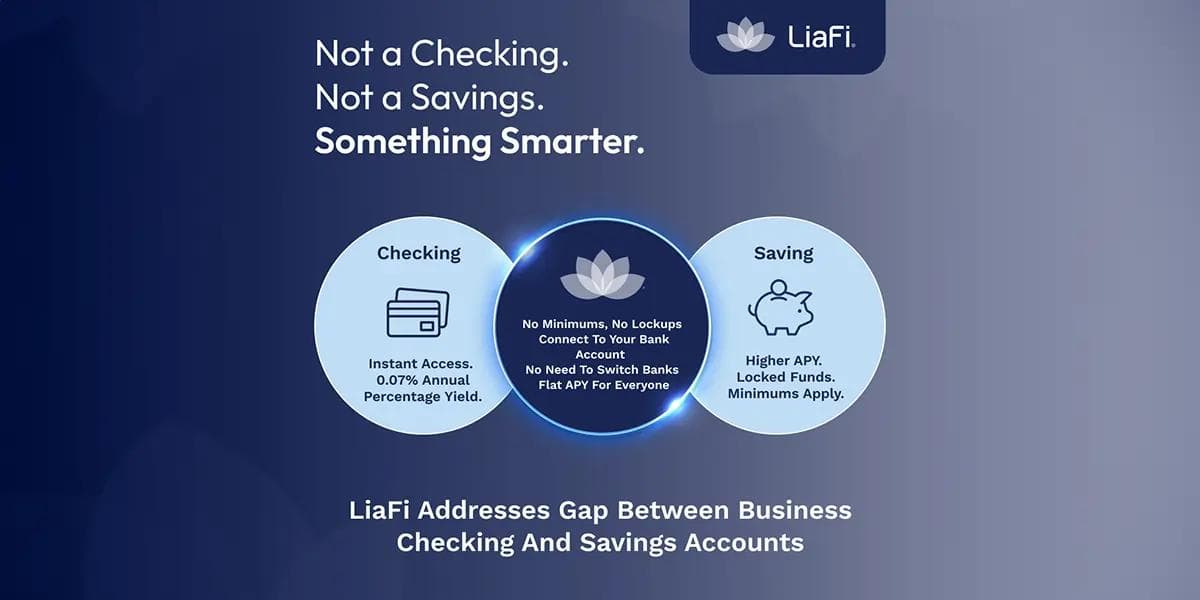The Digital Sovereignty Shift: What It Means for Business, Tech, and Policy
The Digital Sovereignty Shift: What It Means for Business, Tech, and Policy
Published by Wanda Rich
Posted on May 13, 2025

Published by Wanda Rich
Posted on May 13, 2025

Digital sovereignty—the right of a nation to govern its own data, infrastructure, and digital frameworks—is becoming a defining issue in global technology policy. As governments assert more control over digital ecosystems, they increasingly find themselves at odds with Big Tech firms like Amazon, Google, Microsoft, and Meta, whose cross-border platforms often outpace national legislation.
This tension has deep roots but is now accelerating into formal policy. The European Union’s Digital Markets Act, which seeks to curb anti-competitive behavior by dominant digital "gatekeepers," and India’s Digital Personal Data Protection Act, which mandates local data storage in key cases, reflect a growing global resolve to reclaim authority over digital ecosystems.
Why Digital Sovereignty Is Gaining Momentum
The internet was once perceived as a borderless domain—data moved freely, platforms operated across jurisdictions, and few questioned the global infrastructure underpinning everyday life. That perception is rapidly shifting. In the wake of high-profile scandals like Cambridge Analytica, governments are reasserting their authority over the digital realm, linking data governance to both democratic accountability and national resilience.
At the core of digital sovereignty is a country’s right to determine how data about its citizens is collected, stored, and used. The issue is no longer solely about privacy—it is now intertwined with national security. Critical infrastructure, from hospitals to energy grids, increasingly depends on digital systems. According to research from the Carnegie Endowment for International Peace, governments across Asia view digital sovereignty as essential to securing national interests, especially in an era of rising geopolitical competition.
As a result, data localization laws are on the rise. Countries are requiring companies to store certain types of data on servers located within their borders to ensure legal jurisdiction and reduce dependence on foreign infrastructure. While often framed as a privacy measure, data localization also impacts global commerce and innovation, creating both compliance burdens and market access challenges for businesses.
At the infrastructure level, some governments are investing in sovereign clouds—national or regionally controlled cloud environments that offer stronger legal protections and more direct oversight. As Gartner notes, cloud computing is now the centerpiece of digital experiences, making sovereignty over cloud infrastructure a critical concern for public sector institutions and regulated industries.
Digital sovereignty is extending into artificial intelligence. A growing number of countries are calling for domestic control over AI training data—especially datasets involving language, identity, or biometric information—arguing that localized data governance is necessary to maintain ethical and cultural standards. A 2023 article in Nature highlights rising tensions over who controls AI training data, as policymakers worry about foreign influence and opaque algorithmic design.
Big Tech’s Cross-Border Power
Despite growing national efforts to assert control over digital infrastructure, a significant portion of the internet still runs on the infrastructure of a few dominant technology firms. Amazon Web Services, Google Cloud, Microsoft Azure, and Meta operate vast global networks that provide cloud storage, AI capabilities, and business-critical platforms to governments and companies around the world.
This transnational reach delivers clear advantages: performance, innovation, and scalability. But it also presents a structural challenge to digital sovereignty. These firms operate across jurisdictions but are ultimately governed by the laws of their home countries. As a result, national governments often find themselves negotiating sovereignty within a system designed for seamless global operations—where data flows, processing, and storage frequently cross borders by default.
Increasingly, however, tech firms must adapt to a fragmented regulatory environment. China’s Personal Information Protection Law (PIPL) mandates strict data localization and cross-border transfer reviews. Brazil’s Lei Geral de Proteção de Dados (LGPD) imposes GDPR-style obligations on companies operating in Latin America’s largest economy. These and other laws are reshaping the rules of engagement in key markets, often requiring cloud providers to localize infrastructure, overhaul data handling protocols, and navigate competing jurisdictional claims.
As The Wall Street Journal has reported, tech giants now face increasing compliance costs in India, Europe, and beyond, from building local data centers to adapting privacy policies. Each additional rule erodes the efficiency gains of operating global platforms—and adds legal complexity, especially when laws in different jurisdictions conflict.
This regulatory patchwork is not just a legal issue; it’s a strategic one. The more governments assert control through localization and access mandates, the more difficult it becomes for companies to maintain unified operations. It also challenges the underlying premise of an open, global internet—prompting debate about whether the future digital ecosystem will be unified, or fragmented along national lines.
Navigating the Compliance Burden
As digital sovereignty policies multiply, companies that rely on global platforms are confronting new operational risks. What once seemed like a seamless, borderless infrastructure is now shaped by competing national regulations, forcing businesses to rethink how they manage and move data.
One of the most pressing challenges is regulatory fragmentation—the growing divergence in data protection laws across jurisdictions. As Brookings notes, this trend has created uncertainty for both businesses and consumers, making it more difficult for companies to scale services globally without running into legal barriers. Laws that restrict data flows or impose localization requirements can force businesses to maintain parallel systems for different regions, increasing complexity and cost.
Data transfer bottlenecks are another emerging issue. If personal data cannot be transferred out of a jurisdiction—or if legal mechanisms like standard contractual clauses or adequacy decisions are in dispute—business-critical services like analytics, cloud processing, or customer support can be disrupted. This gained urgency after the 2020 Schrems II ruling by the Court of Justice of the European Union, which invalidated the EU–U.S. Privacy Shield. The court determined that U.S. surveillance laws did not offer adequate protections for EU citizens’ personal data, casting legal uncertainty over many transatlantic data flows. While companies have since relied on standard contractual clauses, these are also under increased scrutiny. As the International Association of Privacy Professionals (IAPP) notes, debates around cross-border data transfers remain unresolved—leaving businesses in a state of regulatory limbo.
These uncertainties affect everything from product launches to vendor selection. Legal teams must constantly monitor shifting regulatory landscapes. IT departments may need to restructure infrastructure to isolate data by geography. Even routine operations—like storing customer records or using third-party analytics tools—now carry compliance risks that didn’t exist a few years ago.
For multinational firms, the implications are strategic as well as technical. Should they standardize on a single cloud provider, or diversify across regions to mitigate regulatory exposure? How should they respond if one country demands access to customer data that another prohibits sharing? In this environment, data governance is no longer just a legal concern—it’s a board-level issue that intersects with cybersecurity, reputation management, and long-term growth strategy.
Emerging Models of Digital Governance
With digital sovereignty now a boardroom concern, what comes next may define the future structure of the internet itself. Three key developments may shape the digital landscape ahead: regional alliances, decentralized technologies, and the rise of regional cloud ecosystems.
1. Regional Alliances for Digital Sovereignty
Countries are increasingly collaborating to establish shared digital rules and infrastructure. Nowhere is this more visible than in the European Union, which is advancing a “digital single market” strategy aimed at harmonizing data protection, cloud standards, and AI governance across member states. The EU’s approach goes beyond regulation—it includes investments in digital infrastructure, such as cloud initiatives and 5G networks, to reduce dependence on non-European providers. According to the World Economic Forum, these collaborative strategies are key to asserting digital sovereignty in a globalized tech ecosystem.
2. Decentralized Technologies
Alongside top-down policy efforts, decentralized systems are gaining momentum as an alternative to platform-based control. Innovations like blockchain, peer-to-peer networks, and decentralized identity systems promise to redistribute control of data and infrastructure away from centralized entities—including both governments and tech conglomerates. While these technologies are still in development, they offer a potential counterweight to Big Tech dominance and overly centralized state oversight. They may also enable new models of cross-border digital trust that bypass traditional infrastructure dependencies.
3. Regional Cloud Ecosystems
Another emerging trend is the creation of regional or national cloud platforms tailored to local legal and operational requirements. Sovereign clouds, operated either by governments or trusted private partners, enable states to retain greater jurisdictional control over data. As Gartner notes, regional clouds are becoming central to future digital experiences, particularly in sectors such as healthcare, public services, and finance. These environments serve as a hedge against global platform risks, while preserving the flexibility of modern cloud services. Initiatives such as Gaia-X in Europe and G42 in the UAE exemplify how governments are responding with infrastructure-level solutions.
The Big Question
Can these emerging models reshape the global tech stack—or will Big Tech adapt once again, using legal engineering and flexible infrastructure to maintain dominance? The answer will shape how the digital economy evolves—toward fragmentation, greater balance, or a reimagined model of global integration.
The Bottom Line
The struggle over digital sovereignty is more than a regulatory trend—it is a redefinition of how data moves, who sets the rules, and what values shape the digital economy. Whether through regional coalitions, local clouds, or decentralized models, the push for control is reshaping the operating environment for governments and businesses alike.
This is not just a technology question—it’s a structural one. As the OECD notes, data governance now sits at the heart of national economic resilience and public trust. Decisions made today will shape not only global trade and innovation, but also the societal norms and institutional frameworks of the digital age.
Whether you're a policymaker designing new rules, a corporate leader recalibrating risk, or a citizen concerned about digital autonomy, the future of sovereignty in tech will affect us all. What’s at stake is not just where data resides—but who has the power to define its purpose.
Explore more articles in the Top Stories category











